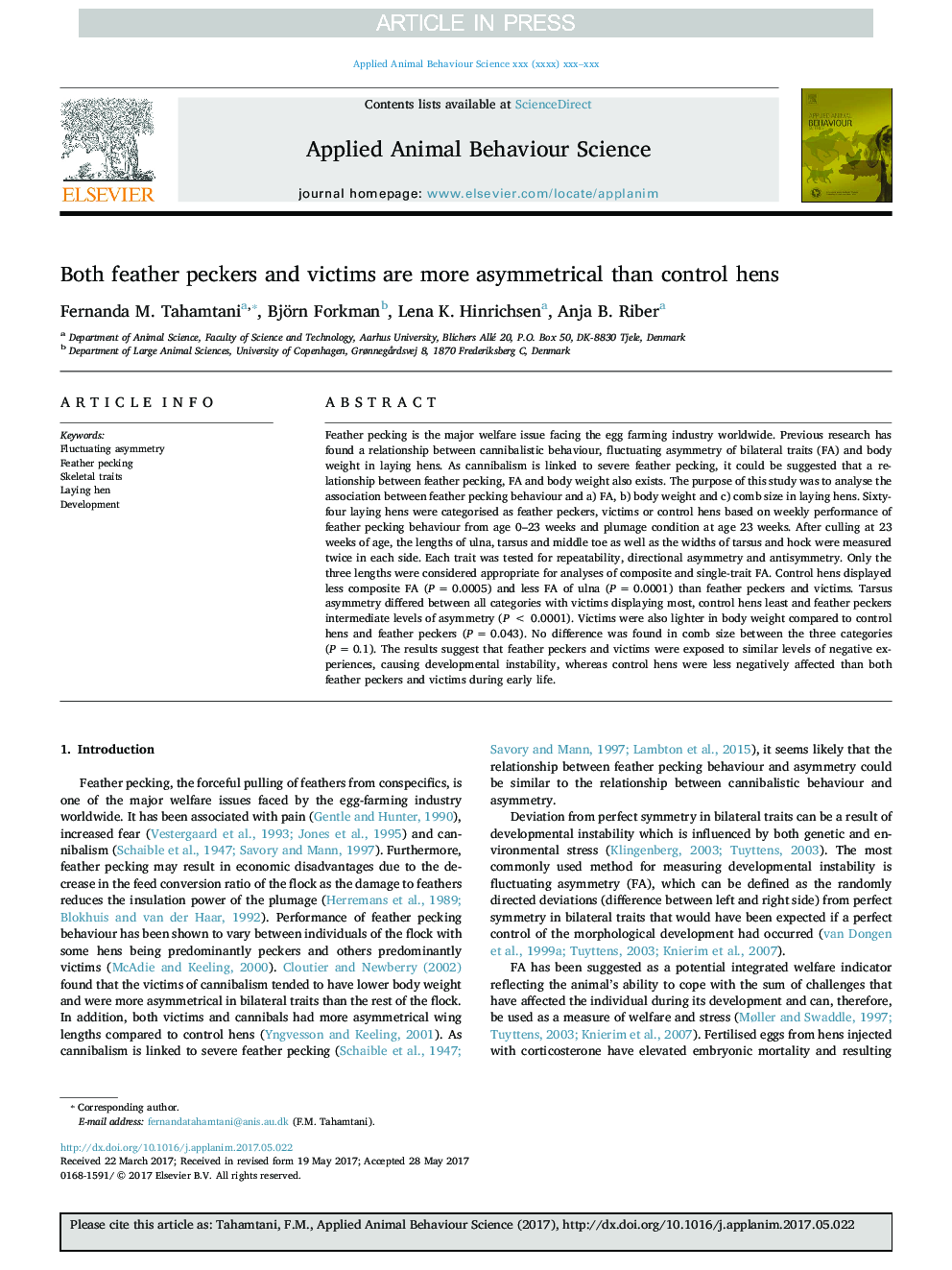| کد مقاله | کد نشریه | سال انتشار | مقاله انگلیسی | نسخه تمام متن |
|---|---|---|---|---|
| 5763249 | 1625311 | 2017 | 5 صفحه PDF | دانلود رایگان |
عنوان انگلیسی مقاله ISI
Both feather peckers and victims are more asymmetrical than control hens
ترجمه فارسی عنوان
هرکدام از پرندگان و قربانیان بیشتر نسبت به مرغ های کنترل نامتقارن هستند
دانلود مقاله + سفارش ترجمه
دانلود مقاله ISI انگلیسی
رایگان برای ایرانیان
کلمات کلیدی
عدم تقارن نوسان، پرتقال صفات اسکلتی، تخم مرغ، توسعه،
موضوعات مرتبط
علوم زیستی و بیوفناوری
علوم کشاورزی و بیولوژیک
علوم دامی و جانورشناسی
چکیده انگلیسی
Feather pecking is the major welfare issue facing the egg farming industry worldwide. Previous research has found a relationship between cannibalistic behaviour, fluctuating asymmetry of bilateral traits (FA) and body weight in laying hens. As cannibalism is linked to severe feather pecking, it could be suggested that a relationship between feather pecking, FA and body weight also exists. The purpose of this study was to analyse the association between feather pecking behaviour and a) FA, b) body weight and c) comb size in laying hens. Sixty-four laying hens were categorised as feather peckers, victims or control hens based on weekly performance of feather pecking behaviour from age 0-23 weeks and plumage condition at age 23 weeks. After culling at 23 weeks of age, the lengths of ulna, tarsus and middle toe as well as the widths of tarsus and hock were measured twice in each side. Each trait was tested for repeatability, directional asymmetry and antisymmetry. Only the three lengths were considered appropriate for analyses of composite and single-trait FA. Control hens displayed less composite FA (PÂ =Â 0.0005) and less FA of ulna (PÂ =Â 0.0001) than feather peckers and victims. Tarsus asymmetry differed between all categories with victims displaying most, control hens least and feather peckers intermediate levels of asymmetry (PÂ <Â 0.0001). Victims were also lighter in body weight compared to control hens and feather peckers (PÂ =Â 0.043). No difference was found in comb size between the three categories (PÂ =Â 0.1). The results suggest that feather peckers and victims were exposed to similar levels of negative experiences, causing developmental instability, whereas control hens were less negatively affected than both feather peckers and victims during early life.
ناشر
Database: Elsevier - ScienceDirect (ساینس دایرکت)
Journal: Applied Animal Behaviour Science - Volume 195, October 2017, Pages 67-71
Journal: Applied Animal Behaviour Science - Volume 195, October 2017, Pages 67-71
نویسندگان
Fernanda M. Tahamtani, Björn Forkman, Lena K. Hinrichsen, Anja B. Riber,
